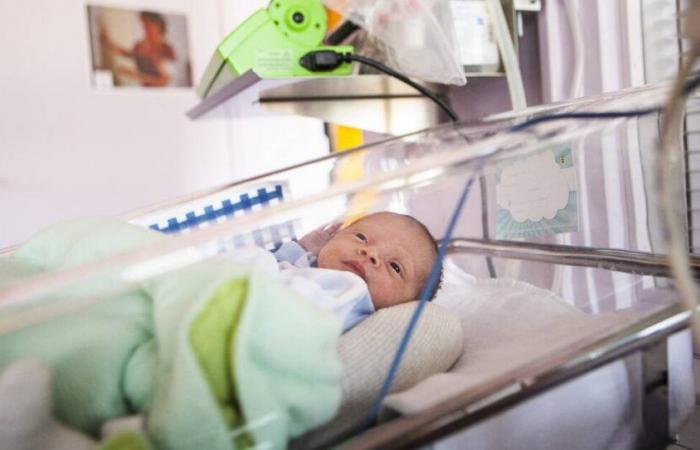
This is a historic figure: down 6.6% compared to 2022, fewer than 700,000 births were recorded in 2023, according to a study published this Thursday, November 14 by INSEE. A decrease which has been observed since 2010 and which is part of a global European trend.
The number of births has continued to decline in France for more than a decade. The figures for the year 2023 confirm this trend. According to the latest annual report from INSEE published this Thursday, November 14, nearly 677,800 babies were born in 2023, a drop of 6.6% compared to 2022. An unprecedented situation since the end of the baby boom, in mid-1970s. Thus, France is catching up with the current global European trend, whereas until then it was the country with the highest fertility rate on the continent, with on average 1.63 children per woman.
The last peak in the birth rate in France was recorded in 2010, with 832,799 newborns. Then the trend reversed: between 2010 and 2022, INSEE reported a 20% drop in births.
8.6% fewer births for young people in their thirties
For the first time since 2010, the decline in the birth rate in 2023 concerns all mothers, whereas it mainly concerned those under 30 in recent years. The decrease in births affects women between the ages of 25 and 34 (the age range most represented in births, at 60%). The Statistical Institute thus notes a decline of 7.4% in births between 2022 and 2023 for mothers aged 25 to 29, and of 8.6% over one year for those aged 30 to 34.
Older categories are affected to a lesser extent: between 2022 and 2023, there were 4.2% fewer births for mothers aged 35 to 39 and 5% fewer among those aged 40 and over. 28% of women who became mothers in 2023 were aged 35 and over, compared to 21% in 2010.
Rural areas particularly affected
In its report, INSEE also points to territorial disparities. The drop in births is more marked in peri-urban and non-peri-urban rural communes, with a decline of 9.1% and 8.4% respectively. Territories which were until now spared from the general decline observed between 2019 and 2022.
Conversely, large urban centers, which account for almost one in two births, recorded a 5% drop in births over one year, slightly below the average for the entire country. In intermediate density urban municipalities, the drop in births in 2023 is similar to that observed throughout France, i.e. 6.6%. As for overseas departments and regions, the decline is only 3%, half as pronounced as in mainland France.
France is gradually aligning with the EU
The decline in the birth rate has affected the entire European Union since 2019 and is long-term – 3.7 million babies will be born in 2023 in the 27 member countries, or 5.5% less than in 2022. The overall decline observed in recent years was until now rather slow in France. But the results for 2023 show that the country is aligning with its European neighbors. Between 2019 and 2023, the number of births fell by 9% in the south and west of the EU – with a drop of 10% in France –, by 11% in the north and up to 21% in the is from the EU.
France





